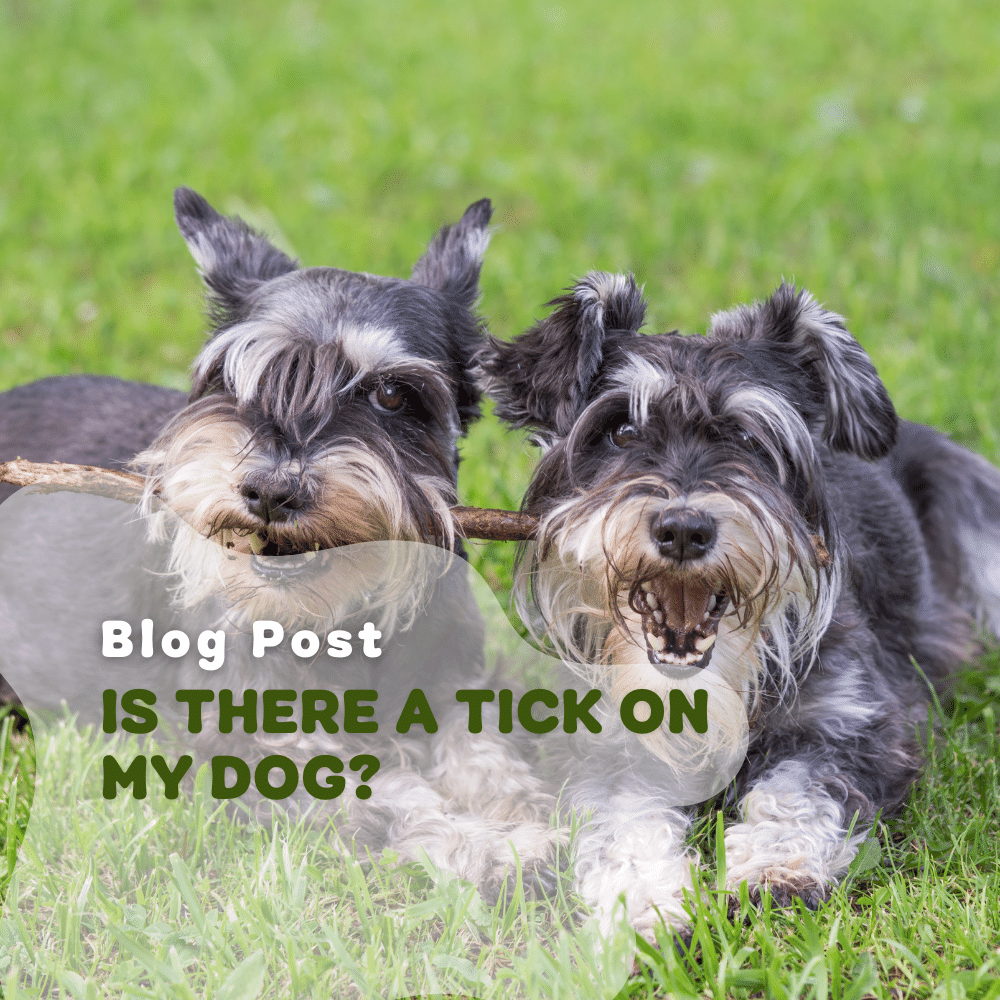
Is There A Tick On My Dog?
Share
What are ticks?
Most pet owners have heard of ticks but might not be too sure about what they are. Ticks are tiny little bugs that latch onto dogs (and cats) and feed off their blood. They are parasites known to carry various diseases that can be potentially dangerous for pets. As they’re pretty small and very good at hiding - especially if your dog has thick fur - it can often be challenging to notice when your dog has one. You may spot an anomaly and start to wonder, is there a tick on my dog?
Is there a tick on my dog?
If you notice a small lump or something you suspect might be a tick but aren’t sure, there are a few symptoms and things you can look out for to help determine if this is what it is. These include:Licking and/or chewing the affected area
A tick will be uncomfortable and may be causing your dog some distress. They can also significantly irritate the skin surrounding the area they have latched onto. Your dog may lick and/or chew the affected area of a tick bite.Red, irritated, or inflamed skin
Depending on how long the tick has been attached to your dog, the area around the bite could be red, irritated and inflamed. If your dog is experiencing a reaction to the tick, you could also expect to see these symptoms.Head shaking or tilting, or rubbing ears
Some ticks are capable of getting inside your dog's ears, or they may latch into the skin around the ear opening. Again, this can cause significant discomfort for your dog and may result in head shaking and tilting, as well as attempts to itch their ears, perhaps on furniture or the floor. There are also a few more serious symptoms that you should look out for if you suspect your dog has been exposed to a tick or multiple ticks for a prolonged amount of time:Anemia
This is especially a concern in small dogs or puppies exposed to multiple tick bites. As the ticks drink the dog's blood, there is a risk of the dog becoming anemic. Anemia in dogs includes lethargy, pale gums and loss of appetite.Tick paralysis
Tick paralysis is a rare but very dangerous condition that some dogs may experience due to a tick bite. Tick paralysis occurs when a tick injects a toxin when they bite into your dog, which can cause them to become lethargic, weak, and paralysed in their legs or entire body. This condition can be cured once your dog receives tick treatment.
Tick or Lyme disease
Even when a tick treatment has been successful, your dog could still be at risk. Tick and Lyme disease symptoms won’t typically present themselves immediately, and dog owners who have had their dogs treated for ticks may notice signs of lethargy, low appetite, low enjoyment, fever, pale gums, difficulty breathing and renal failure. If you notice any of these symptoms with your dog, please make sure you seek appropriate medical attention from a trusted vet.
How to treat ticks
You mustn’t try to remove ticks yourself - your vet will be able to do this safely without presenting further risks to your dog.
The best way to avoid ticks is to use appropriate preventative products. At Bubble Pawz® (https://bubblepawz.com.au/pages/about), we specialise in Natural Organic Pet Flea & Tick Control products deemed safe for pets. These include flea and tick dog shampoos and sprays (https://bubblepawz.com.au/search?type=product&q=tick).
Our products are organic, do not use artificial scents and are fragranced with hand-selected, diluted, pet-safe essential oils.
